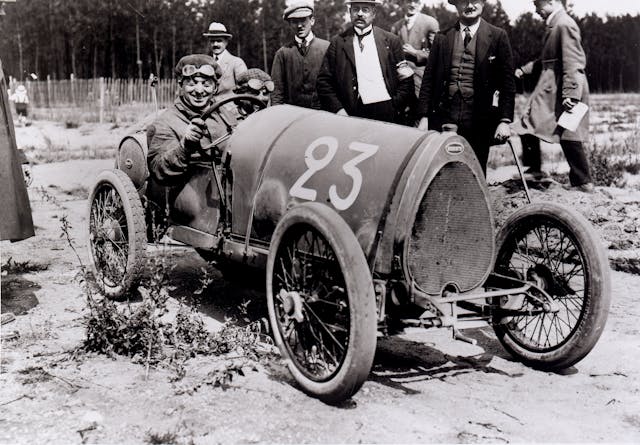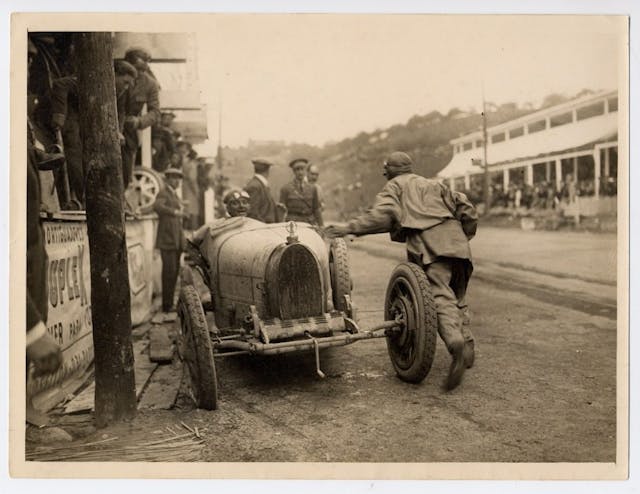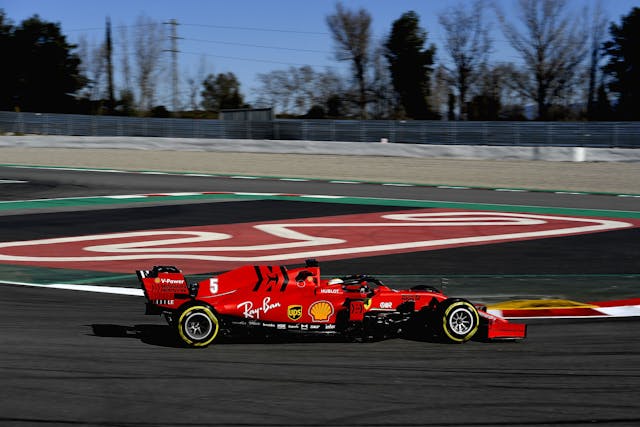Media | Articles
5 significant steps in Formula 1 helmet history

Formula 1 has an interesting history with safety. Few would image that pushing man and machine to their absolute limit would be particularly safe, and yet the birth of racing displays a shocking ignorance of safety to our modern viewpoint. Though safety regulations today govern almost every conceivable aspect of racing, today we’re zooming in on the efforts of the motorsports community to mitigate risk for the drivers, particularly when it comes to head injuries.
Early auto racing had speeds akin to horse racing, which most folks viewed as relatively low-risk. As speeds increased, the call for more robust safety equipment for drivers grew louder. The advent of helmets stemmed from the motorcycle world, but it wasn’t long before hard shells capped the heads of racing drivers. Here are five significant steps in the history of Formula 1 helmets, all pulled from a great video posted by Driver61.
First use

The first helmets were layers of canvas coated with shellac. With no meaningful impact absorption beneath that hard shell, these early designs provided only low-level protection; any major impacts were still transferred to the wearer’s head. Better than nothing. Compared to the more common cloth cap that most drivers wore, however, the helmet was uncomfortable and clunky.
General adoption
Even as racing came back after World War II, helmets were still optional for drivers. Many wore them, but purely by their own choice. It was not until 1952 that the helmet became required kit for Formula 1 drivers (the series itself wasn’t formally organized until 1950). The technology had made a significant leap by the early 1950s; the brain buckets now had more impact absorption and were more or less borrowed from the polo-playing world. Since these helmets still didn’t cover a driver’s face, most wore goggle to keep their vision clear.
Marketplace
Buy and sell classics with confidence
The Bell 500TX

Bell was the first commercial company to market a helmet which passed the SNELL safety certification. This certification was named for William Pete Snell, who lost his life in an accident many thought would have been survivable. The Bell 500TX was the first helmet to pass this bar for impact absorption. Even today, a SNELL certification is something to look for when shopping for motorsports helmets.
Transition to full-face
All helmets were open-face until 1968, when the taller-than-average Dan Gurney got fed up with racetrack debris hitting him in the face. He partnered with Bell to create a helmet that incorporated face protection. Most drivers of the day were worried about moisture accumulation on the inside of the face shield in wet races, not to mention the lack of cooling air during hot races. Thankfully, the increase in safety outweighed the inconvenience of the design, and full-face helmets became a standard sight on the starting grid.
Carbon fiber enters the chat

Besides foreign objects striking their head, the greatest threat to a driver’s life is the g-force of the car striking a stationary object. The additional weight of a helmet exponentially increases the stress to the driver’s neck, which prevents helmet designers from simply adding bulk to protect against external impact. In 2001 the FIA, the governing body in charge of Formula 1 safety, set a helmet weight cap at 1.25 kilograms (2.75 pounds) which all but mandated carbon-fiber construction. The lighter weight helped lower the risk of neck-snapping upon impact, but the HANS device, which attaches the helmet to a collar on the driver’s shoulders, reduced the potential of head movement even more.
The combination of HANS device and full-face helmet is the standard all the way down to hobby racers and track-day enthusiasts. It’s wild to imagine a time when the fastest drivers in the world wore cotton caps and military surplus goggles. Not only does the development of the helmet make for fascinating history; it’s a reminder of just how far technology has come, not only on the cars but also on the devices that allow drivers to operate them to their maximum potential.












